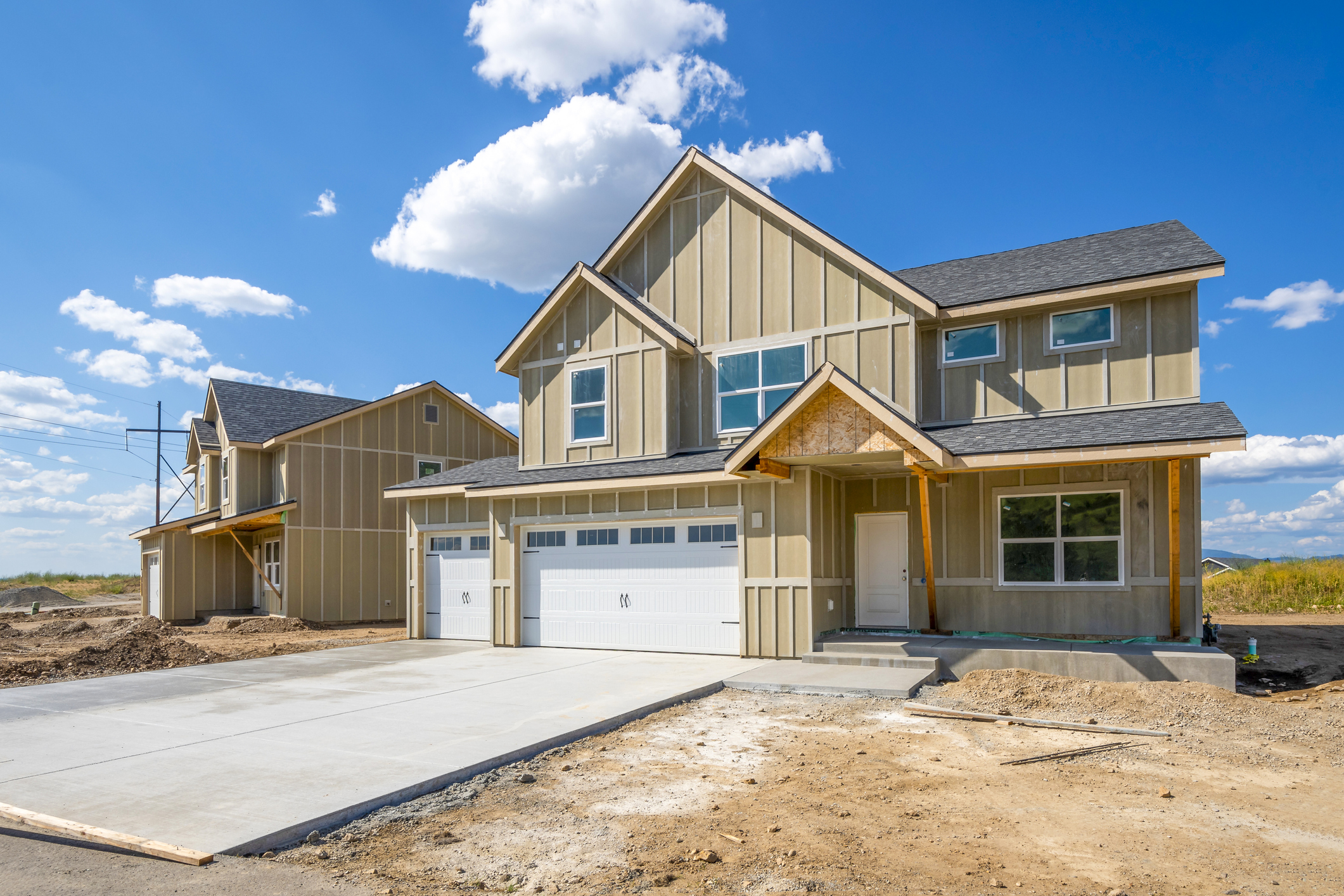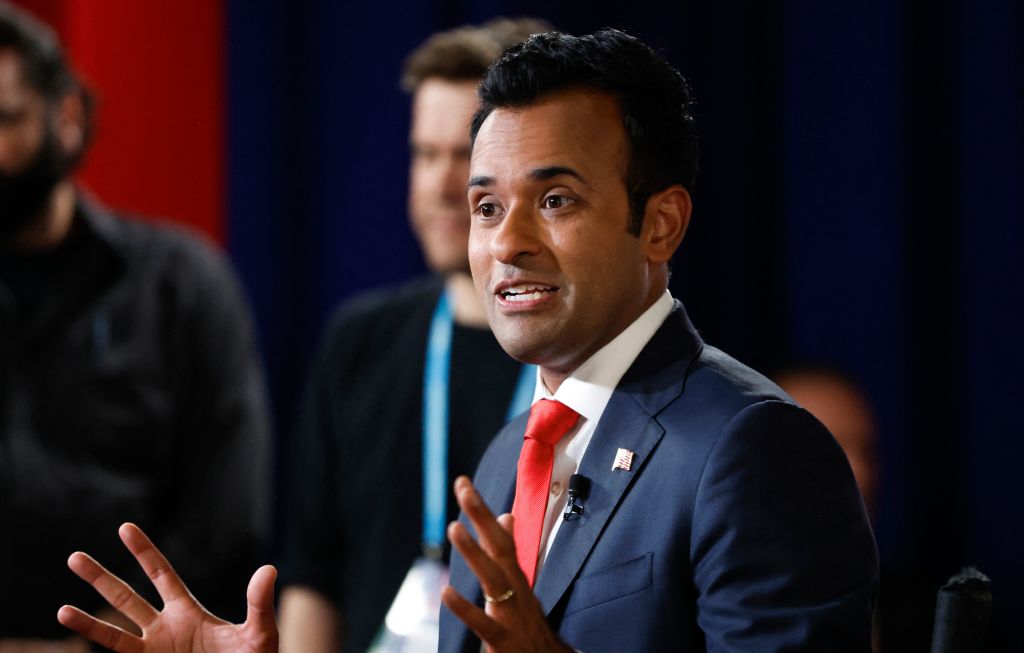Voters, not private litigants, should get to decide if Trump is re-elected in 2024.
Make America California

The neo-feudal Newsom model has been a disaster.
Like the buffoonish commanding officer in Gilbert and Sullivan’s The Pirates of Penzance, Gavin Newsom for many represents “the very model of a modern Major-General,” filling the expectations of the progressive political elite. Handsome, articulate, and politically savvy, Newsom has emerged as the new matinee idol, in stark contrast to Joe Biden’s poor ratings, clear cognitive decline, and increasing stench of corruption.
With the looming threat of a second Trump presidency, Democrats and many others are desperate to find someone who appears somewhat competent while embracing progressive dogma on issues like climate, racial reparations, and gender. Biden has adopted this same agenda, but his basic appeal and instincts remain those of a traditional spoils-oriented Democrat.
The shift to Newsom parallels a deeper tendency in the party. Joe Biden wears his dubious working-class roots on his sleeve, while Newsom has emerged as the coddled child of what the Los Angeles Times described as “a coterie of San Francisco’s wealthiest families,” most particularly the Getty family, which financed his business ventures, allegedly paid for his first lavish wedding, and helped launch his political career. As former California assembly speaker and San Francisco Mayor Willie Brown suggests, “he came from their world, and that’s why they embraced him without hesitancy and over and above everybody else,” he told the Times. “They didn’t need to interview him. They knew what he stood for.”
The Rise and Pitfalls of the Upstairs, Downstairs Coalition
As Ruy Texeira and John Judis write in their new book, Where Have All the Democrats Gone? Democrats are less and less the party of the working class, small farmers, and business owners and increasingly the voice of public employees, rent-seeking professionals, and the oligarchic class and their richly-funded non-profits. Rather than economic growth—widely viewed with suspicion by the greens—the new focus is on issues like climate, transgender “rights,” and racial retribution.
Newsom’s success, and that of the Democrats in Blue America, lies in a political dynamic that unites these groups. They constitute what was first characterized by the late Fred Siegel as “the upstairs, downstairs coalition” based on an odd alignment of the wealthy, the public sector, educated professionals, and the poor against the less-organized, fading middle class. This alliance has grown in part as a reaction to Trump, who has destroyed the prospects of the GOP in much of the country, as well as the relentless yammering of environmental and “social justice” advocates.
Like aristocrats of the past, Newsom tries to play the masses, enhancing an already elaborate welfare state while offering huge raises to public employees and subsidies for companies engaged in the “energy transition.” This approach has fostered the California model for neo-feudal America, a place characterized by extreme wealth alongside the nation’s highest poverty rate, as well as the widest gap between middle- and upper-middle income earners of any state. California’s “progressive” political economy defies traditional views of the Left. According to the state’s Legislative Analyst’s Office, 20 percent of wealth is held within 30 zip codes that account for just two percent of the state’s population. Less than 33 percent of state wealth is held within 1,350 zip codes that house 75 percent of Californians. Since the seventies, California middle-class incomes, once ebullient, have stagnated.
In Newsom’s California, the majority struggle with high rents, a diminished middle-class job market and, increasingly, crime, disorder, homelessness, and an education system among the worst in the nation, rapidly losing enrollments, and where upwards of one-third of students regularly avoid classes. President Biden, suggests an ecstatic account in the Los Angeles Times, may seek to “make America California again,” but few national journalists actually look at what is happening beyond Sacramento, Silicon Valley, or Hollywood.
The War on Blue Collar and Middle-Class California
Class, note Texeira and Judis, is the great vulnerability of the gentry liberal regime. Newsom postures as a social justice advocate, and his filmmaker wife Jennifer, scion of a very wealthy Bay Area family, who once dated George Clooney, has even made a documentary that concludes that America is a “racist country” from its origins, a nation where racial and gender oppression is systematically rife.
Yet beyond the virtue-signaling empathy, Newsom and his allies have stood by while many of the companies that drove California’s middle-class growth—heavyweight “real economy” firms like Northrup, Union Oil, Occidental, McKesson, Fluor, Bechtel, and many others—have left the state.
Until recently the associated pain was obscured by the rise of new, mostly tech-oriented firms, three of which, Apple, Google, and Meta, are among the world’s most highly valued. All are almost entirely nonunionized companies and almost three in four employees were not even permanent residents, but “technocoolies,” mostly imported on temporary visas from countries like China, the Philippines, and India.
As the tech oligarchs reached the dizzying heights of uber-wealth, the rest of the California economy suffered. Policies pushed by Newsom, particularly in regard to climate change, have served to raise housing costs and narrow opportunities for working-class people in blue collar industries. The “green” mandate imposed by Newsom and his predecessor Jerry Brown has increased energy prices since 2017 by three times the national rate. This has been devastating to poorer Californians, particularly in the less-temperate interior, where “energy poverty” has grown rapidly. Proposals to get to “net zero” in Los Angeles will triple energy bills over the next decade in an area where a substantial portion of the population already barely makes enough to pay their current expenses.
High energy bills and ever-tightening regulations have weakened many industries once critical to blue collar workers. Over the past decade, the Golden State has fallen into the bottom half of states in manufacturing-sector employment growth, ranking 44th last year; its industrial new job creation has been negative. Companies in high-wage industries like aerospace continue to flee. Even without adjusting for costs, notes the New York Times, no California metro ranks in the U.S. top ten in terms of well-paying blue-collar jobs, but four—Ventura, Los Angeles, San Jose, and San Diego—sit among the bottom ten.
Nor does it appear that “green jobs” or Bidenomics will come to the rescue. Though much of the semiconductor industry is currently headquartered in the state, the new surge of chip production is taking place almost entirely in less expensive and regulated places like Ohio, New Mexico, Arizona, and Texas. Similarly, most new electric vehicle and battery plants are located either in the Heartland, the South, or other locations east of the Sierra Nevada.
The End of the Dream? First California, Then the Nation
California is increasingly not a place for upward mobility for the masses. Once the beacon of middle class aspiration, it has become among the least egalitarian in the nation. Incomes for California’s middle and working classes have been heading downward for a decade. And the same goes for the poor, despite elaborate welfare state largesse from a handful of wealthy individuals and powerful companies.
To fund its bureaucracy and transfer payments, the state is increasingly dependent on a relative handful of taxpayers; according to Franchise Tax Board data, 46 percent of all personal income taxes are paid by individuals in the top one percent, with the top five percent paying two-thirds of all personal income taxes. Capital-gains collections have grown five-fold since 2010, while income taxes, which made up barely one-third of the state budget in 1980, now constitute two-thirds.
In contrast, incomes for California’s middle and working classes have been heading downward for a decade. Over the past decade, roughly 80 percent of all jobs created in the state paid below the median income. At the same time minorities—notably African Americans and Latinos—do worse in California’s metros than elsewhere in the country, according to a recent study we conducted at the Urban Reform Institute. In Atlanta, African American median incomes, adjusted for costs, are almost double those in San Francisco and Los Angeles; Latinos earn $20,000 more in Midwestern and Southern cities than in the enlightened metros along the California coast.
A New Mission for Democrats?
As the promise of broad-based growth has faded, Newsom-style Democrats place their policy emphasis on reordering society, with particular focus on women and ethnic and gender minorities, especially the transgender. These are popular issues among the party’s activist base, notes Texiera and others, notably schoolteachers, highly-educated professionals, the affluent, and the media.
In contrast, it offers little to nothing for the traditional Democratic coalition, not only working-class people, but Hispanics, religious Jews, and even some religious African Americans. Some measures, like a new one that Newsom is expected to sign, threaten parents who are leery of transgender transitions for underage youths. The state’s new sex education standards, which include some graphic representations of carnal acts of various kinds, has raised opposition among recent immigrants, from the Latino, Asian, African American, and Muslim communities. Immigrants, according to one recent survey, are twice as conservative in their social views than the general public.
Overall the cultural agenda, built around identity politics and increasingly central to the current party belief system, has sparked outrage across the country, and not just among ultra-fundamentalist rural yahoos. Some of the strongest protests against the progressive cultural agenda have taken place in highly diverse places like Jackson Heights, Queens, as well as in immigrant-rich communities like Glendale, California.
Is the Model Broken?
It is far too early to declare the Newsom model a failure, at least politically. After all, he easily beat a recall in 2021, and then won reelection by roughly a 20 point margin. Yet this took place when the state was enjoying a nearly $100 billion surplus, while the Legislative Analyst’s Office predicts the return of budget deficits, this year well above $30 billion, at a time when rival states like Florida and Texas are enjoying big surpluses and looking to cut taxes.
These realities threaten Newsom’s penchant for handing out thousands of dollars of goodies to poor households and erecting massive subsidy programs for housing and healthcare for the poor and the underemployed. Today, understandably, Californians are distinctly pessimistic about the state and its prospects. Almost 70 percent, according to a 2022 PPIC poll, predict bad economic times ahead. Even in San Francisco, according to a recent Chronicle poll, almost one-third said they were likely to leave within the next three years, and two-thirds claim life in the city is worse than when they first moved here.
Yet the very failure of the state—as well as other Blue states—could perversely strengthen the progressive hold. Many of the people leaving the state for places like Texas include middle-class families who appear to be fairly conservative in their views. Left behind, then, are those who still tend to back progressive policies—poor minorities, public employees, high-income professionals, and people without children. If anything, California’s politics, particularly those in Los Angeles and Oakland, seem to be taking a turn toward the hard left.
Newsom and the California Legacy
The last California governor to become president, Ronald Reagan, entered the Oval Office when his state still maintained its historic allure. But even as Newsom gears up for a possible presidential run, for the first time in its history California is losing population, not just from out-migration—a net loss of over 340,000 just last year—but also because immigrants are starting to avoid the state. Once the land of youth, California is now aging 50 percent faster than the rest of country, notes demographer Wendell Cox, according to the American Community Survey.
Clearly Newsom would be poorly suited to replicate Reagan’s “man on horseback,” but he may still seem like El Cid to Democrats hungry for a less-than-comatose leader. Conservatives may cast him as a tool of the far Left, but he is actually an accomplished political opportunist, with far less strident left-wing views than most of his party’s legislative delegation. As mayor of San Francisco, he ran as a “dogmatic fiscal conservative and a social liberal,” a combination that appealed to the tech firms that transformed the city during his reign. After winning election as lieutenant governor, in 2011 Newsom ventured to Texas to witness firsthand that state’s thriving economy—a move many saw as implicit criticism of then-Governor Brown.
Newsom recently provided two further indicators of his flexibility. He vetoed a bill that would have legalized “shooting alleys”—so-called safe drug-injection sites—in San Francisco, Los Angeles, and Oakland. Many of his progressive allies, who favor such programs, denounced the veto. They may be untroubled by rising street crime and drug overdoses, but Newsom knows that disorder in California’s major cities offers a devastating talking point for his opponents—especially those to his right.
Newsom even has been willing to take on the greens, at least when it threatens his own political prospects. He recently extended the life of California’s last nuclear plant, now slated to stay open until 2029, conveniently after any future Newsom presidential run. He has even been willing to keep its gas plants open, aware that his own polices are likely to cause massive energy shortages on the power grid. These moves have offended the powerful green lobby, but Newsom, not a stupid man, knows that the “net zero agenda” hardly reflects a realistic policy; Newsom spokesman AnthonyYork suggested that the green policy agenda “feels like fantasy and fairy dust.”
A more reliable view of Newsom is to see him as the anointed candidate of the Bay Area’s elite class, sharing their virtues but also not anxious to confiscate the wealth of those who have financed his career. He ran for reelection not as a young version of Bernie Sanders but as a fiscally conscious moderate. In the run up to 2024, he seems likely to rebuff efforts by the public employee unions to raise the state’s income tax, already the nation’s highest, or add new payroll taxes to pay for universal healthcare. Newsom has also dismissed progressive plans for a wealth tax that would apply even to some of those who move out of the state. Such proposals could drive more high-profile billionaires to flee, as Elon Musk and Larry Ellison have already done.
Although California has lost much of its traditional allure, what happens here does not stay here. The country, in many ways, has become economically, culturally, and demographically more like California, with growing inequality and progressive takeover of key institutions. If Biden falters, Newsom may emerge as the Democrats’ alternative to Vice President Kamala Harris, who generates little enthusiasm even among California progressives. Some hope she can be bought off by a plum private-sector job or perhaps an appointment to the Supreme Court.
Ultimately, whether under Newsom, Harris, or some similarly culturally-aligned friend to the tech elite, gentry progressivism seems destined to dominate the Democratic Party, serving the interests of the upper classes while winning over the poor with redistributed wealth. It may not be a winning strategy for the country, but it could prove surprisingly effective in gaining and keeping political power not only in Sacramento but ultimately Washington, D.C. as well.
The American Mind presents a range of perspectives. Views are writers’ own and do not necessarily represent those of The Claremont Institute.
The American Mind is a publication of the Claremont Institute, a non-profit 501(c)(3) organization, dedicated to restoring the principles of the American Founding to their rightful, preeminent authority in our national life. Interested in supporting our work? Gifts to the Claremont Institute are tax-deductible.
The worldwide lack of affordable housing can only be resolved politically.
The California Reparations Task Force is trying its best to skirt a landmark Supreme Court ruling.
The presidential candidate stands against the Left's attacks on the ties that bind.
Is California turning on its Jews?
Let's do a little regime change, one red state at a time.






